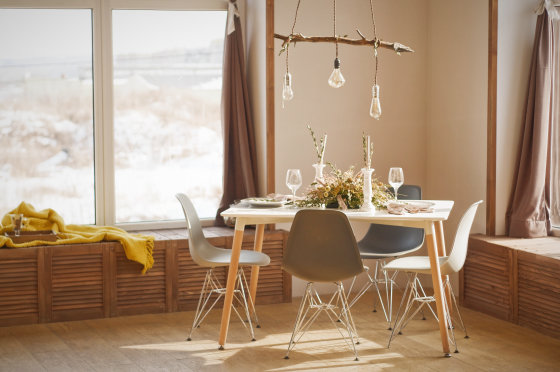“Living in a small house” helps protect the global environment

by
There is a need for a means to stop global warming and climate change, and in recent years, “ not eating meat ” has been screamed as one means. On the other hand, because there is an idea that 'living in a small house' also has a positive impact on the environment, researchers investigated 'how much does a small house actually affect the environment'.
When people downsize to tiny houses, they adopt more environmentally friendly lifestyles
https://theconversation.com/when-people-downsize-to-tiny-houses-they-adopt-more-environmentally-friendly-lifestyles-112485
Over the past decades, American housing has tended to be “big”. According to a survey in 1973, the average size of a new American building was about 154 square meters, but in 2017 it became huge to 244 square meters. The house size has increased by 63%. On the other hand, a minimalist movement began in the 2000s with the appearance of a manufacturer called “ Tumbleweed ” with the theme of “Living in a small house”.

by
There are various reasons for choosing a “small house”, but there are such things as “I want to reduce the impact on the environment”, “I want to simplify my life and belongings”, “I want to reduce the economic burden”. In fact, the “small house” approach may require less construction materials, and although there is a difference, the construction cost will be in the range of 30,000 to 40,000 dollars (approximately 3.2 to 4.3 million yen) on average . That .
A “small house” sold by Tumbleweed looks like this. The following is a house of $ 72,000 (about 7.8 million yen) .

This is

A cheaper $ 60,000 (about 6.5 million yen) house .

Inside is like this. There is a living and kitchen on the first floor, and a bedroom on the second floor.

This is a loft and bedroom.

If you build a large house, you will lose the original green space, increase air pollution and energy consumption, and lose biodiversity by fragmenting the ecosystem. For this reason, the claim that “small houses are good for the environment” is often seen, but few studies have actually investigated this point. Maria Saxton, a PhD student in environmental design at Virginia Tech, focused on this and conducted research to measure the environmental impact of making a house smaller.
Saxton first conducted a questionnaire survey of 80 people who moved to a small house for over a year. The ecological footprint was calculated and compared between a large house before relocation and a small house after relocation. In addition, nine of the subjects were examined in depth using the deep interview method to see how their behavior changed as a result of moving their homes.

by
Ecological footprint is a numerical value that shows the environmental impact of human beings on the environment required for resource reproduction and waste purification. The houses covered in the survey are scattered all over the United States, but it was shown that an average 45% of the ecological footprint decreased due to relocation. “We found that smaller homes have an impact on lifestyle and less impact on the environment in unexpected ways,” says Saxton.
Saxton made a calculation focusing on the spatial footprint of the ecological footprint. Research has shown that the average ecological footprint of “small houses” across the United States is 3.87 global hectares (approximately 38,400 square meters). This means that 38,400 square meters is needed to support a person living in the house for one year. On the other hand, the size of the respondents before the reduction was 7.01 global hectares (approximately 70,000 square meters). The average footprint of Americans is 84,000 square meters, which means that living in a small house can reduce the impact on the environment by less than half.
In addition to the ecological footprint, the respondent's diet, transportation, consumption of goods, services used, etc. may be affected by the size of the house. These respondents tend to eat local and self-grown crops, less travel by car, motorcycle, bus, train, airplane, etc. It seems that there was a tendency to drive a car. In addition, there was a tendency to not buy trash, to recycle paper and plastic, and not to trash. For this reason, Saxton sees that “making the house smaller” is one step in behaving better for the environment.

by Daniil Silantev
In addition, Saxton used the footprint data from this study to calculate what effect would some Americans have if their homes were made smaller? As a result, it was shown that 10% of Americans could save about 1.5 million square kilometers of biologically productive land by making their homes smaller. This is about 4 times the area of Japan.
Examining respondents' behaviors that changed with a smaller house, 86% had a positive impact on the environment and 14% had a negative impact. Positive impacts include “rainwater recovery” and “carpooling”, but negative impacts include “having a long-distance driving because of a house in the countryside” There are also voices saying, “There is no space so we can no longer recycle.”
In future research, it is important to understand the implications of negative impacts and to understand the possible impact of factors other than downsizing the house, Saxton said It is.
Related Posts:
in Note, Posted by darkhorse_log







